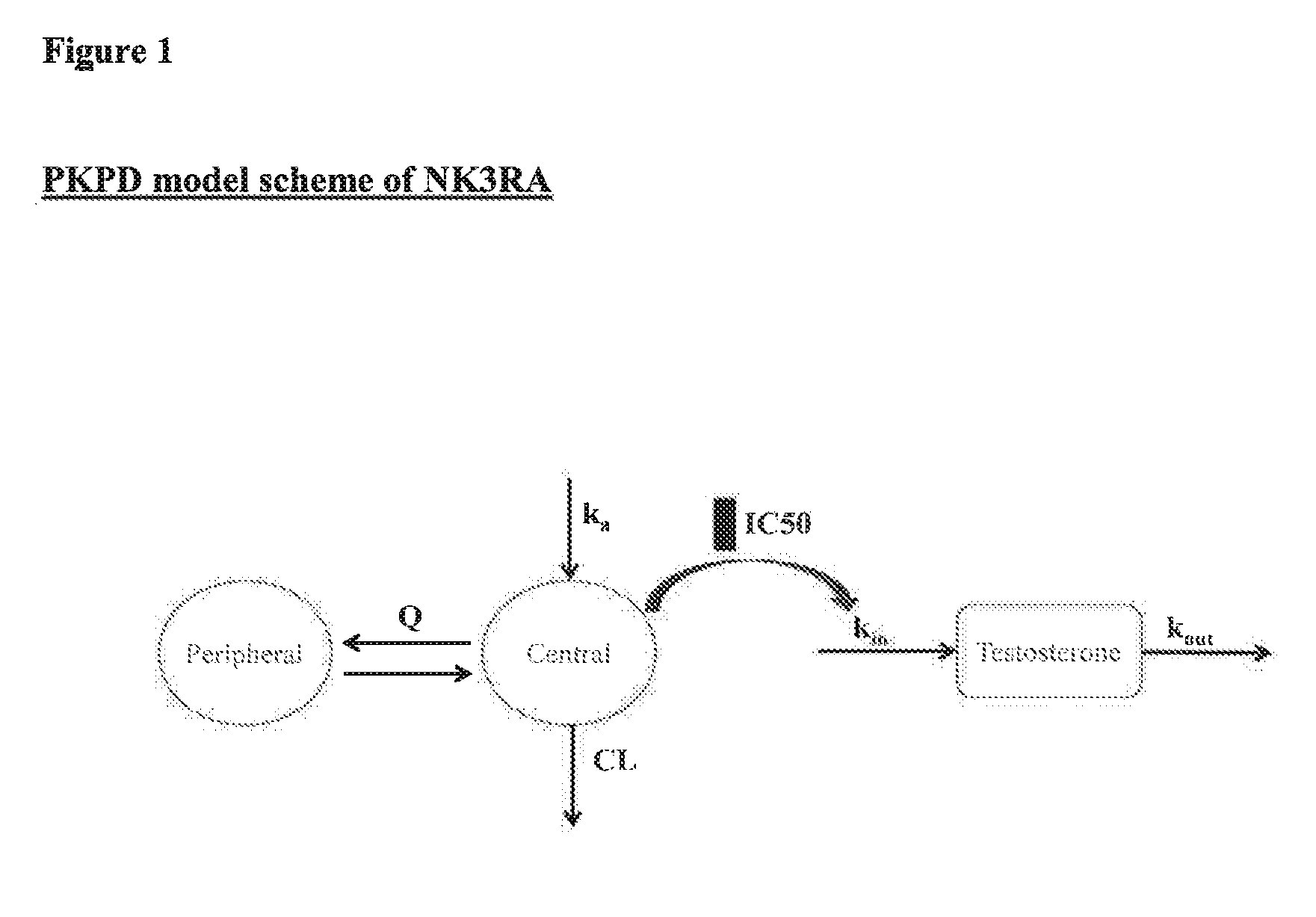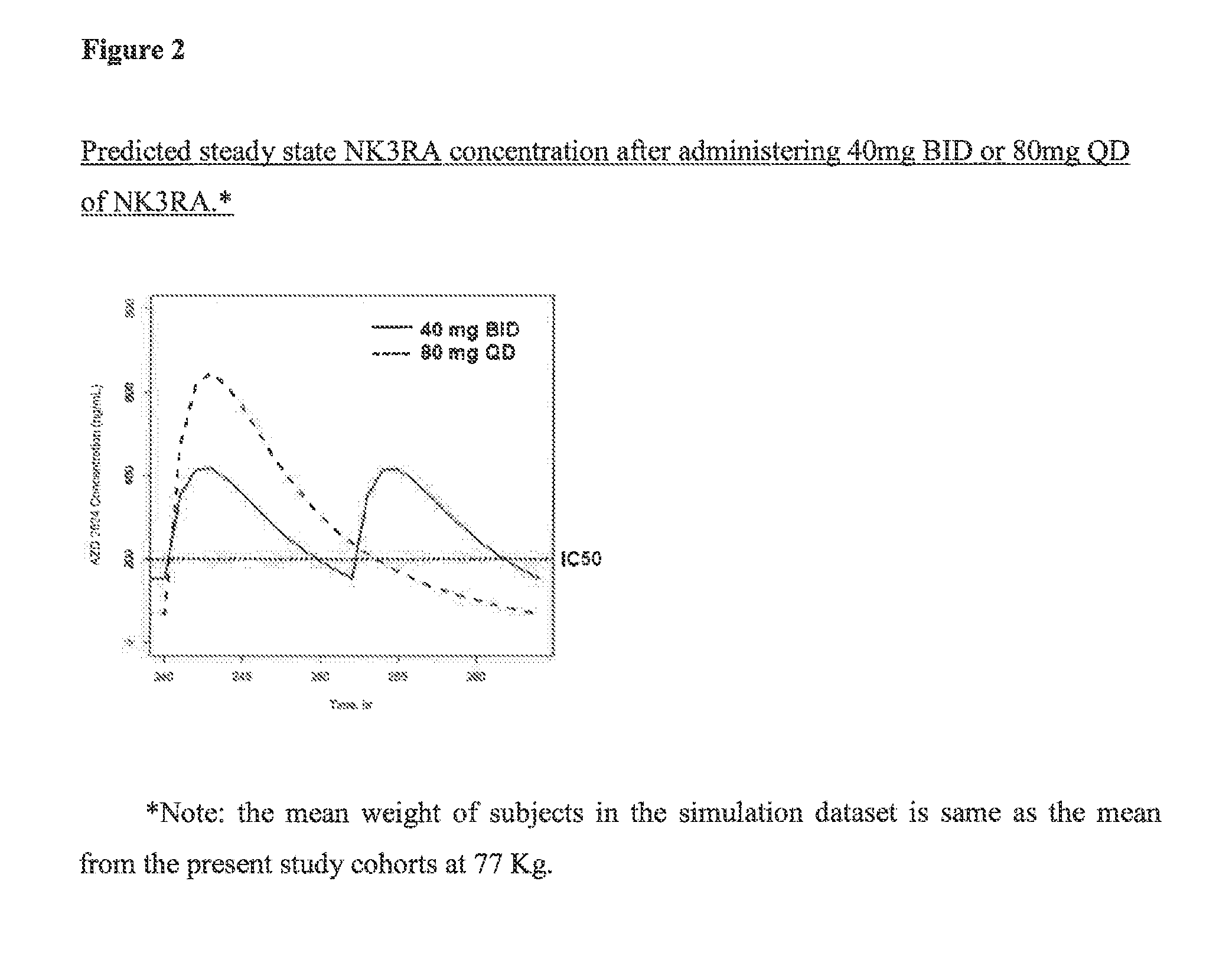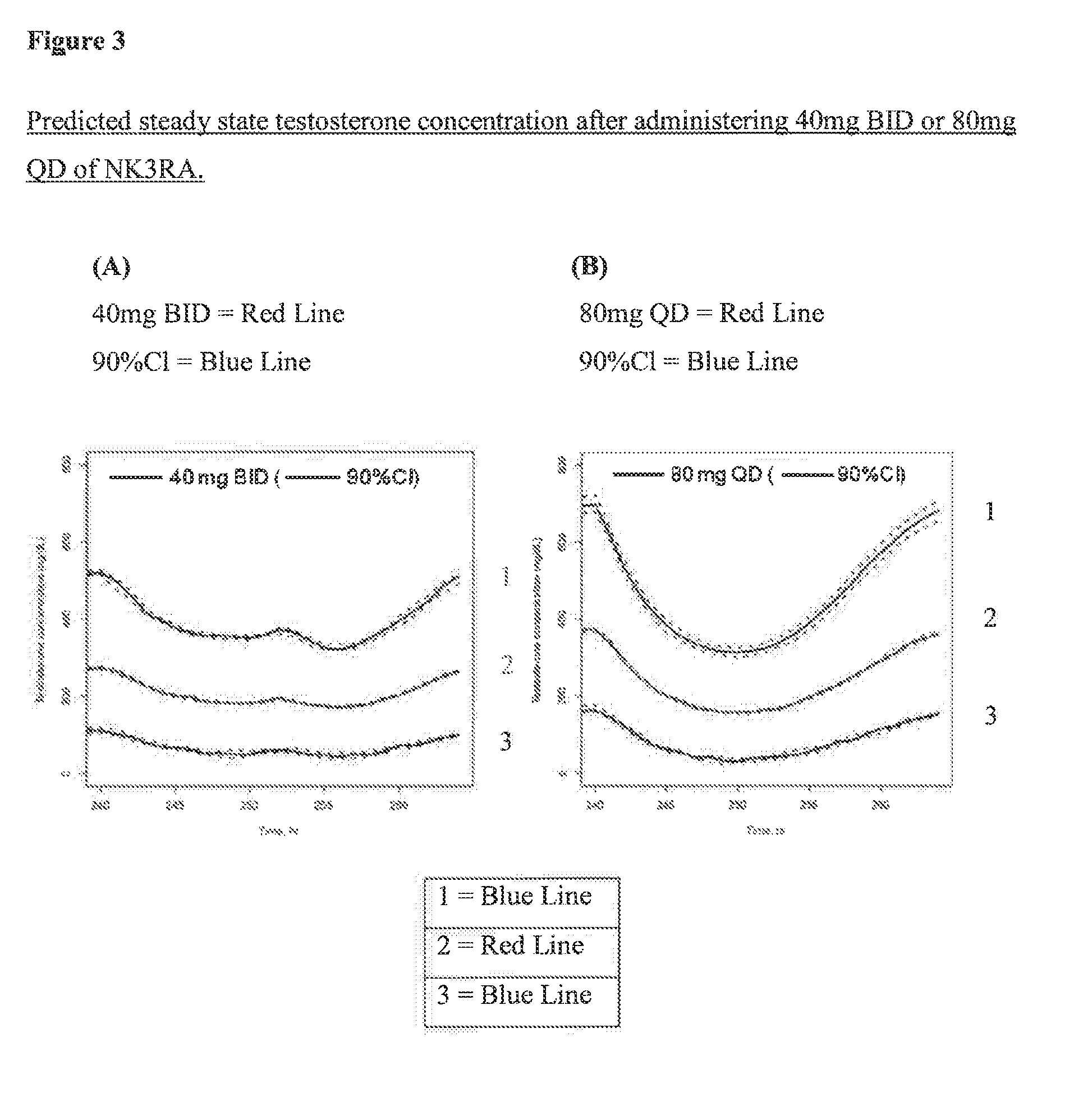NK3 receptor antagonist compound (NK3RA) for use in a method for the treatment of polycystic ovary syndrome (PCOS)
a polycystic ovarian syndrome and receptor antagonist technology, applied in the field of treatment of polycystic ovarian syndrome, can solve the problems of requiring add-back hormonal therapy, unable to achieve adequate control of androgenic symptoms, and carries the risk of potentially harmful electrolyte derangement, so as to increase the rate of absorption and increase the cmax
- Summary
- Abstract
- Description
- Claims
- Application Information
AI Technical Summary
Benefits of technology
Problems solved by technology
Method used
Image
Examples
example 1
3-(Methanesulfonamido)-2-Phenyl-N-[(1S)-1-Phenylpropyl]Quinoline-4-Carboxamide Having the Following Structure May be Prepared as Follows
[0156]
[0157]To 3-[(methylsulfonyl)amino]-2-phenylquinoline-4-carboxylic acid (1c) (20.00 g, 58.4 mmol) in ethyl acetate (180 ml) 1,1′-carbonyldiimidazole (13.26 g, 81.8 mmol) is added. The resulting slurry is heated to 50° C. and the reaction mixture stirred at 50° C. for 6 h. (S)-(−)-1-phenylpropylamine (11.85 g, 87.6 mmol) in ethyl acetate (15 ml) is then added and the reaction mixture further heated to 70° C. and stirred for 8 h. The solution is then cooled to room temperature and the residue partitioned between ethyl acetate and aqueous hydrochloric acid. The organic phase is then co-distilled with isopropanol to result in an isopropanol solution. This is then seeded and cooled. The solid is collected by filtration, washed with isopropanol and dried to yield the title compound (19.74 g, 74%) as a solid. 1H NMR (300 MHz, CDCl3) δ 0.94 (t, 3H), 1....
example 2
[0161]Method:
[0162]Population pharmacokinetic / pharmacodynamic (PK / PD) modeling of NK3RA and testosterone concentrations from four phase I studies and one phase II study was performed to quantify the exposure-response relationships between plasma concentrations of NK3RA and testosterone. PKPD analyses were conducted using sequential approach via nonlinear mixed-effects modeling with NONMEM® VII. The PK model was developed first and the predicted concentrations from the empirical Bayes estimates of the PK parameters were used in the PD response model building. The developed PKPD model was used to explore different dosing regimens [40 mg bi-daily (BID) vs 80 mg once-daily (QD)] targeting reduction of plasma testosterone levels and predict PD response.
[0163]NONMEM is a software package, just like Microsoft Office. It is a specialized software for the analysis of pharmacokinetic and pharmacodynamic data. NONMEM is an abbreviation of the full name “NONlinear Mixed-Effect Modeling” which w...
PUM
| Property | Measurement | Unit |
|---|---|---|
| weight | aaaaa | aaaaa |
| weight | aaaaa | aaaaa |
| time | aaaaa | aaaaa |
Abstract
Description
Claims
Application Information
 Login to View More
Login to View More - R&D
- Intellectual Property
- Life Sciences
- Materials
- Tech Scout
- Unparalleled Data Quality
- Higher Quality Content
- 60% Fewer Hallucinations
Browse by: Latest US Patents, China's latest patents, Technical Efficacy Thesaurus, Application Domain, Technology Topic, Popular Technical Reports.
© 2025 PatSnap. All rights reserved.Legal|Privacy policy|Modern Slavery Act Transparency Statement|Sitemap|About US| Contact US: help@patsnap.com



